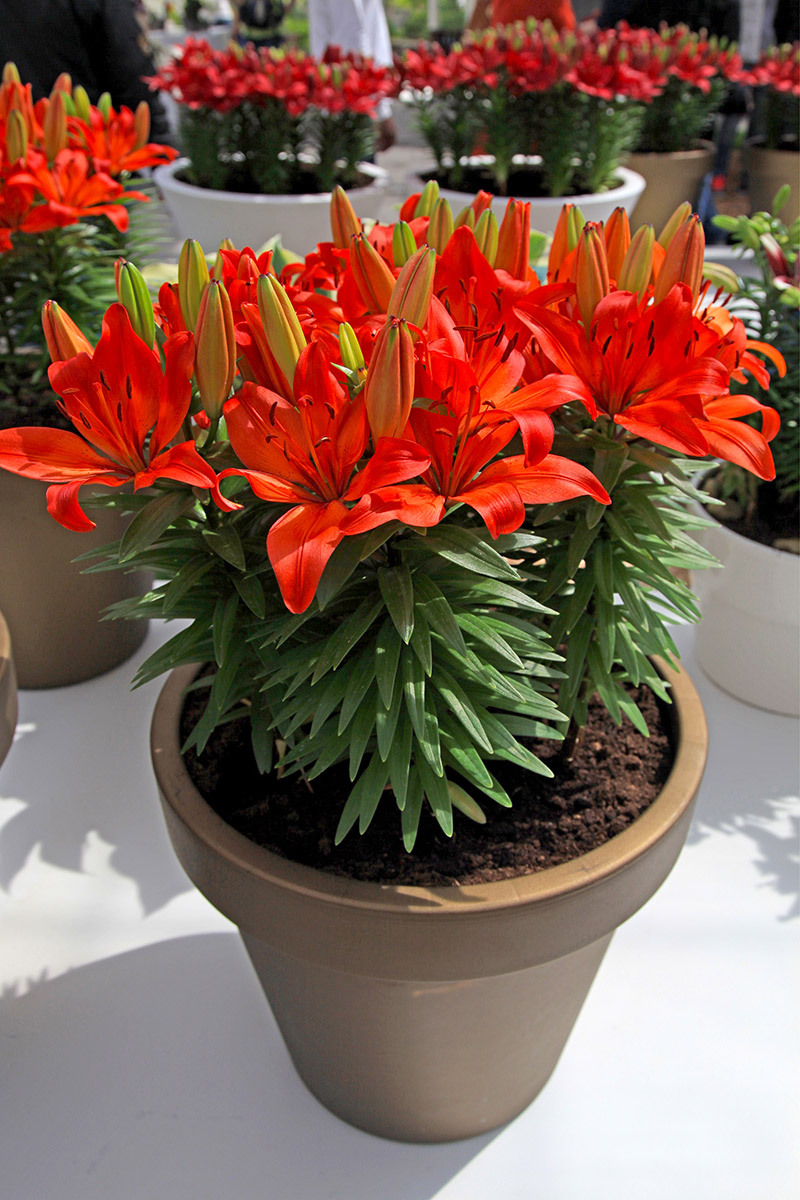Three Effortless Steps to Flower Longevity Revealed
Posted on 17/08/2025
Three Effortless Steps to Flower Longevity Revealed
Love the beauty of fresh-cut flowers, but always disappointed when they wilt too soon? You are not alone. Whether they've been gifted for a special occasion or you've chosen blooms to brighten your living space, everyone wants their flowers to last. We know the struggle of watching a gorgeous bouquet fade rapidly. But what if there was a way to maximize your blooms' shelf life with only a few simple steps?
In this comprehensive guide, we're unveiling three effortless yet effective steps to flower longevity. Follow these floral secrets exclusively designed to keep your bouquets fresher for longer. Discover the best practices, common mistakes to avoid, and expert tips for prolonging your flowers' lifespan at home. Whether you're a florist, plant lover, or just adore a beautiful arrangement, these essential techniques are for you!
Why Flower Longevity Matters
Let's be honest: Fresh flowers are an investment, both financially and emotionally. Every day they stay vibrant means more joy and value for you. Extended longevity also reduces waste and makes the most of nature's fleeting gifts. However, cut flowers begin to deteriorate the moment they are separated from their source of water and nutrition. Without proper care, flowers can wilt, lose color, and die much sooner than they should.
Fortunately, achieving maximum flower longevity doesn't have to be complicated or time-consuming. With a little knowledge and the right approach, it's possible for anyone to keep blossoms looking stunning well beyond their usual lifespan. Read on for the proven three effortless steps for long-lasting flowers.

Step 1: Prepare Your Flowers for Optimal Longevity
Start with Premium, Healthy Flowers
- Begin with the best. Inspect stems, petals, and leaves for any signs of damage, wilting, or disease.
- Choose blooms that are just opening, as they will last far longer than fully open flowers.
- Avoid any bunches with brown, mushy, or slimy stems. These are already beginning to decay.
Trim Stems Properly
- Immediately after bringing your flowers home, use clean, sharp scissors or floral shears.
- Cut the stems at a 45-degree angle under running water. This increases the surface area for water absorption, and cutting underwater prevents air bubbles from blocking water uptake.
- Remove at least one to two inches from the base of each stem.
Defoliate the Lower Leaves
- Any leaves that will fall below the water line in the vase should be removed.
- Submerged leaves promote bacterial growth that quickly leads to nasty water and a shorter flower lifespan.
- This quick step makes a drastic difference in overall bouquet freshness.
Key Insight: Vase life begins the moment you bring flowers home. Taking the time to prepare each stem is the foundation of every long-lasting arrangement!
Step 2: Master the Art of Arranging and Hydration
Use the Right Vase & Fill with Fresh, Clean Water
- Always use a sparkling clean vase free of any residue, mold, or detergent traces.
- Cold or room temperature water works best for most flowers. Some (like tulips) prefer cooler water, while others enjoy a bit warmer - research your specific variety if unsure.
- Fill the vase about two-thirds full so stems are submerged but the bouquet isn't overcrowded.
Add Floral Food or Alternative Preservatives
- Most florist bouquets come with a packet of flower food - use it! These contain nutrients and anti-bacterial agents to nourish blossoms and keep bacteria at bay.
- If you're out of commercial flower food, you can use homemade options. Add a teaspoon of sugar (for energy), a drop of bleach (to reduce bacteria), and a few drops of lemon or lime juice (to acidify the water).
- Never add aspirin, vinegar, or soft drinks, as these can damage certain flower types.
Arrange Gently and Avoid Overcrowding
- Step back as you arrange to ensure all stems have space to "breathe" and absorb water freely.
- Avoid packing flowers too tightly, which can cause bruising, restrict water flow, and promote mold growth.
Pro Tip: For taller vases or top-heavy blooms, consider creating a grid with transparent tape on the mouth of the vase for extra support and stability.
Step 3: Daily Flower Care for Prolonged Freshness
Refresh Water & Re-Cut Stems Regularly
- Change vase water daily or every other day to prevent bacterial buildup and provide a clean source of hydration for your flowers.
- Give stems a fresh diagonal cut every two to three days - this keeps them from sealing up and encourages constant water uptake.
Keep Arrangements in the Right Environment
- Display flowers in a cool spot, away from direct sunlight, heating vents, or drafts. Excess warmth makes flowers wilt faster.
- Steer clear of ripening fruit! Fruit (especially bananas and apples) emit ethylene gas, which is a natural "flower aging" hormone. Exposure will dramatically shorten bloom time.
- Ensure adequate airflow, but avoid placing arrangements under ceiling fans or air conditioners.
Remove Fading Flowers Promptly
- As flowers age, some will naturally wilt while others remain vibrant. Quickly remove any dying, browning, or drooping blooms from the arrangement.
- Dead-head or trim off spent petals and yellowing leaves. This not only keeps the bouquet looking beautiful but also prevents the spread of ethylene and bacteria.
Remember: Good flower care is a daily habit, not a one-off task. Checking in on your arrangement only takes a minute but can add days - even a week or more - to its lifespan.
Frequently Asked Questions on Prolonging Flower Life
What Types of Flowers Last the Longest?
- Chrysanthemums, carnations, alstroemeria, orchids, and lilies are known for their extended vase life, often lasting over two weeks with proper care.
- Roses and tulips can last 7-10 days if well-maintained.
- Sunflowers and zinnias are also household favorites for their durability and color retention.
What Should I Avoid to Keep Flowers Fresh?
- Don't mix narcissus (daffodils) with other flowers unless you "condition" them first, as they release a toxin into the water.
- Never place bouquets near fruit, as ethylene gas causes premature wilting.
- Never add too much bleach or sugar, as excessive doses can harm your blooms.
- Do not expose flowers to cigarette smoke or exhaust fumes.
How Long Can I Expect My Flowers to Last?
- With these three effortless steps for flower longevity, most fresh flowers can last 7-14 days or more - double or triple the typical time!
- Original freshness depends on flower type and pre-purchase handling. But correct post-purchase care always extends their display time.
Extra Tips to Maximize Flower Vase Life
- Always clean your vase before adding new flowers to avoid residual bacteria harming your fresh bouquet.
- Spritzing petals lightly with water can help keep some thirsty flowers looking perky, especially in dry climates.
- Condition woody-stemmed flowers (such as lilac), by smashing the ends gently with a hammer to encourage water uptake.
- If arranging hydrangeas, dip cut ends in boiling water for a few seconds before placing in the vase; this prevents the stems from sealing up.
- Keep a close eye on the water quality--if it appears cloudy, it's time for a change!

Conclusion: Unlock the Secret of Lasting Flower Beauty
Enjoying bloom longevity doesn't have to be complicated! These three easy steps to keep flowers fresh longer--preparation, proper hydration and arranging, and consistent daily care--are all it takes to maximize your arrangement's life. Understanding and prioritizing each stage of flower care will reward you with vibrant, lasting bouquets that continue bringing joy long after other flowers have faded.
Whether you're celebrating a special moment or simply infusing your home with floral elegance, make the most of every bouquet by following these proven steps for flower longevity. Your flowers--and your heart--will thank you!
Share Your Flower Longevity Story!
Have you discovered your own secrets to prolonging the life of fresh flowers? Share your favorite tips or flower longevity hacks in the comments below. Don't forget to bookmark this page and share it with your friends who adore flowers as much as you do!
- Long-lasting flowers don't require special products--just a little knowledge and regular attention.
- By embracing these three effortless steps to flower longevity, you can transform every bouquet into a lasting delight.
Unlock a world of blooming beauty--one vase at a time!
Latest Posts
Three Effortless Steps to Flower Longevity Revealed
What Makes Red Roses Perfect for Valentine's Day
Poinsettia Preservation: Pro Tips for Longevity





